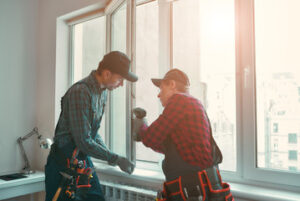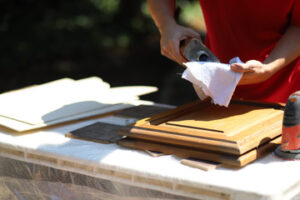If your home’s windows are looking a little worse for wear, it may be time to consider replacement options. New windows will provide benefits like increased natural light, reliable ventilation and enhanced security features.

The window experts will take the time to help you make a decision that will meet your aesthetic, function and energy efficiency needs. Contact Replacement Windows Lexington KY now!
The style and design of replacement windows significantly influence the visual appeal of your home. Depending on your aesthetic preferences, you can select windows with wooden frames for a timeless charm or vinyl for a sleek and modern look. The material you choose also influences the maintenance requirements and durability of your windows. Wooden frames require regular upkeep, while vinyl and fiberglass windows can last a lifetime with minimal effort.
Upgrading to modern replacement windows is a great way to boost your property’s curb appeal and make it more appealing to potential buyers. Contemporary window designs feature sleek, minimalist frames that complement the architectural design of your home, creating a beautiful and inviting exterior that draws admiration from passersby. Window styles like casement and bay also come in a wide array of colors, allowing you to create striking contrasts or coordinate with the existing design elements.
In addition to boosting your home’s visual appeal, modern replacement windows can improve its energy efficiency and comfort by reducing heat loss and noise. This is possible thanks to the advanced materials and construction techniques used in today’s windows, which are designed to reduce a home’s energy consumption while providing improved indoor comfort.
New replacement windows are also designed to provide superior light penetration and views, making it easier than ever to enjoy the beauty of nature inside your home. By utilizing larger panes and slim frames, these windows can maximize sunlight intake and brighten interior spaces, transforming them into vibrant living areas. The light-filled rooms can be an inviting draw for any would-be homebuyers, and they’ll also feel more spacious and expansive.
Aside from aesthetics, replacement windows can also increase your home’s resale value by increasing its energy efficiency and enhancing its safety features. Many of today’s windows come with advanced locking mechanisms and shatterproof glass options to keep your family and valuables safe. These upgrades will impress any potential buyer and may even lead to higher resale prices.
Energy Efficiency
Energy-efficient windows are designed to prevent cooled or heated air from escaping your home. This feature significantly reduces your home’s energy usage, which in turn lowers your energy bills each month. Newer windows are also better insulated than older or poorly-insulated homes, which means that they require less energy to maintain a comfortable indoor temperature.
Energy efficiency is a critical factor to consider when selecting Replacement Windows. This is because a large portion of your energy bill is from heating and cooling your home. New windows are designed to keep your home warm in the winter and cool in the summer. In addition, they are built to minimize condensation and improve indoor air quality.
As a homeowner, you can ensure that you purchase Replacement Windows with high energy ratings by looking for the ENERGY STAR label and the NFRC label. These labels provide unbiased, industry-recognized energy efficiency stats for windows. These ratings are important because they help you make an informed decision about which windows are the best fit for your home.
Another reason that energy efficient Replacement Windows are an excellent investment is because they can significantly increase your home’s resale value. Buyers will be more willing to pay a premium for a home that has newer, more efficient windows than one with old or leaky ones.
In addition to their aesthetics and energy efficiency, Replacement Windows can enhance the soundproofing of your home. This feature can be especially helpful if you live near a busy road or have noisy neighbors. New windows will also protect your carpeting, furniture and other interior finishes from fading due to sunlight. Moreover, if your replacement windows are installed properly, they will be a beautiful addition to your home’s overall curb appeal. This will boost your property’s value and help you recoup some of the installation cost in the event that you decide to sell your home in the future.
Durability
Replacement windows come in a variety of styles, colors, and materials to match the aesthetic of any home. But even more importantly, many options feature frames that are highly durable and require a minimal amount of maintenance. This will allow homeowners to spend less time cleaning and more time enjoying their new home improvement investment.
The average lifespan of a window depends on its frame material and other factors such as installation quality and routine care. However, when it comes to a long lifespan, it’s hard to beat the durability of replacement windows with fiberglass or vinyl frames. These high-performance products resist swelling, warping, and rusting and can easily handle the rigors of extreme climate conditions.
The longevity of replacement windows also relates to the insulating power of their frames. A good way to assess this is by looking at the energy efficiency ratings of a product. For example, ENERGY STAR windows are certified by the Environmental Protection Agency to meet rigorous energy-efficiency guidelines. This means they can keep heat from escaping in the winter and air from entering in the summer, thus saving homeowners money on their energy bills.
Other considerations for the longevity of replacement windows include the type of glass and the quality of the frame seals. While older windows often experience problems such as seal failure, which can lead to mold, rotting, and other issues, newer replacement windows are built with stronger seals and glass that are more resistant to moisture.
When it comes to the average lifespan of replacement windows, aluminum and fiberglass are among the best options. These lightweight materials are easy to handle and a great choice for any climate, as they are able to withstand the intense cold of winter and hot sunshine of summer.
Vinyl windows are a popular option that offer a modern look while providing the benefit of low-maintenance living. They are made from extruded polyvinyl chloride, or PVC, which is a durable plastic polymer that’s also used to manufacture countless building products including plumbing pipes, electrical wire insulation, and exterior house trim. In addition to being a safe and cost-effective alternative to traditional wood windows, they’re also incredibly easy to clean and are resistant to weathering, fading, and staining.
Security
Having the peace of mind that comes with feeling safe and protected in your home is essential to happiness. The windows that surround your sanctuary play a critical role in ensuring this, and thanks to advancements in security features, homeowners can enjoy the protection of a well-secured abode.
Modern replacement windows are crafted with advanced locking mechanisms, impact-resistant glass, and reinforced frames to prevent break-ins. These upgrades provide robust protection against unauthorized entry, allowing homeowners to feel at ease when they’re away from their homes for work or vacation.
A key feature of many newer replacement windows is a multi-point locking system. These locks engage at multiple points along the window frame, distributing force evenly and making it difficult for intruders to pry open windows. Laminated glass, another popular upgrade option, is constructed of several layers bonded together with an interlayer of polyvinyl butyral (PVB), making it extremely durable and resistant to impact. In addition to these security features, some replacement windows are designed with tamper-resistant hardware, further deterring criminals from gaining access to your abode.
Visible security measures, such as window alarms and grilles, also act as a powerful deterrent against burglaries. These features make your home a less appealing target for criminals, and can even help to lower insurance rates.
If you’re looking to install replacement windows with added security features, look no further than the high-quality vinyl window products. Their durable construction, advanced locking systems, and impact-resistant glass are ideal for enhancing your home’s security, while maximizing energy efficiency. To get started, contact us today to schedule your free in-home consultation! We’ll discuss your options for upgrading your home’s windows with a professional installer, and help you find the perfect solution to meet your needs.


